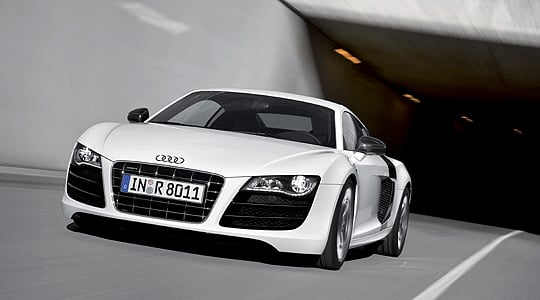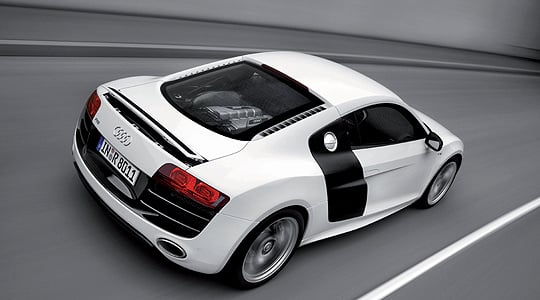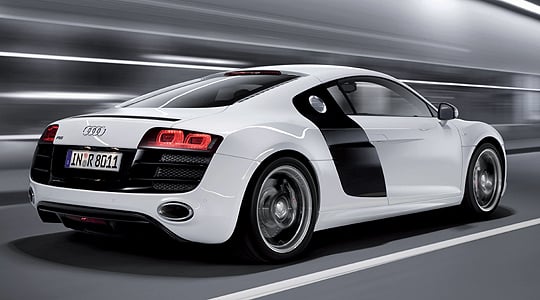
The R8 has caused much dispute in the Classic Driver office. Stylistically, is it a winner or loser? We asked designer Chris Hrabalek to give his views...
The road-going Audi R8 was named after one of the most successful sports-racing prototypes ever: an R8-badged entrant has won the 24 Hours of Le Mans an astounding five times. It is therefore surprising – if not a little disappointing – that the design of Audi’s flagship is conservative rather than progressive; a far cry from ‘Vorsprung durch Design’.
Rewind to the beginning of the decade, when Audi was enjoying considerable success with its numerous Audi Sport racing programmes (that were to last for nearly a decade, and still counting…). The brand needed a flagship product to communicate and translate its on-track dominance to on-road prestige.

It was Walter de’Silva himself – previously headhunted by none other than the automotive Godfather, Dr Ferdinand Piech – who commissioned a number of show cars from the various in-house studios to communicate Audi’s new stylistic values. One such car was the front-engined 2003 Audi Nuvolari Concept, another the mid-engined 2003 Audi Le Mans Quattro Concept; the latter of which was to form the stylistic basis of the R8 road car.
Whatever one’s opinion of the R8, you cannot accuse Audi’s designers of losing the look of the 2003 Audi Le Mans Quattro Concept in the long and difficult process towards (limited) production. One would be hard-pressed to think of another example, bar Audi’s original pair of TT concepts a decade earlier, whose production-car translation was this successful.
Unfortunately, the design of the R8 can hardly be called revolutionary – especially with regard to the R8’s volume, surfacing or proportion. Based around the technological platform of the Lamborghini Gallardo, you could easily assume that anything based on this package would be a stylistic ‘home run’; but the Gallardo is precisely the problem. A direct comparison between the two cars simply highlights what the Italians got right and the Germans got wrong.

The design of the Audi R8 lacks passion. It tries to be an unprovocative supercar – a paradox from the start. It’s like the average Phil Collins track – an ideal ambient tune to blend in, and most definitely the easy-listeners’ choice, a track that can be instantly accredited to the artist – if, that is, one bothers to pay it any attention.The R8’s most powerful stylistic traits lie in the detailing – detailing that is true to German ideals of perfection. There are sci-fi touches, such as the LED-lit engine under a transparent lid or the optional full-LED headlights, the first on a production car, providing a perfect vision of mainstream technology of the future. ‘Vorsprung durch Technik’ indeed.
As well as the distinctive ‘face’, shaped by three dominant stylistic elements doubling as air-intakes, it’s the side-blades that form the R8’s styling DNA. Audi invested a great deal of effort in marketing different finishes for these blades, ranging from a traditional painted finish in a contrasting colour, to the now almost clichéd carbonfibre or Audi-typical ‘brushed aluminium’ look. There seems to be a combination for every taste.
If one were critical, one could say that a race car as dominating and significant as the R8 deserved a road-car relative that is more hypercar than supercar, with styling to match. Let’s hope the R15 TDI-badged road car is not too far away…
Text: Chris Hrabalek
Photos: Audi
ClassicInside - The Classic Driver Newsletter
Free Subscription!



